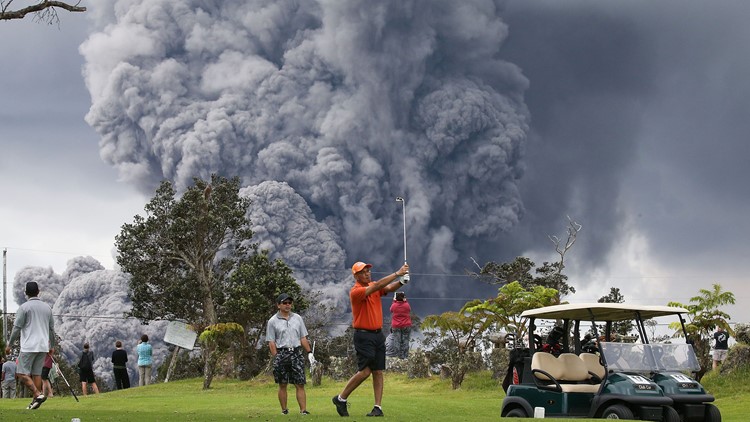With Hawaii's Kilauea volcano continuing to belch out lava, ash and noxious fumes, people are wondering: Could it soon explode in a deadly and catastrophic fashion, like Mount St. Helens did in 1980?
Probably not, said University at Buffalo geologist Tracy Gregg. "Kilauea and Mount St. Helens are different in almost every imaginable way," she said.
Michael Poland of the U.S. Geological Survey, agreed, saying there's no concern that Kilauea could explode like Mount St. Helens did back in 1980.
"The volcanoes are very different in composition and style," he said.
One big difference? Gas bubbles, Gregg said.
The magma, what lava is called when it's still underground, in Mount St. Helens is thick and sticky — think cold peanut butter — and full of gas bubbles. So it's prone to violent explosions as it reaches the surface.
However, Kilauea's lava is runnier — like honey — and contains less gas, so it flows more easily and doesn't explode.
"Kilauea is not likely to have a Mount St. Helens-style eruption because it's made of runny lava that lets the gas bubbles escape, and the lava doesn't contain much dissolved gas to begin with," Gregg said.
Poland said gas is what drives explosive eruptions. That's why high-silica volcanoes (like Mount St. Helens) tend to erupt more explosively than low-silica volcanoes (like Kilauea). Silica is a rock-forming compound that helps determine the thickness of the lava.
Mount St. Helens, in southwestern Washington state, blew its top in a ferocious explosion on May 18, 1980, killing 57 people in one of the biggest volcanic eruptions in U.S. history.
The two volcanoes are also different shapes: Kilauea is a gently sloping shield volcano, unlike Mount St. Helens, which is a steep-sided stratovolcano, also known as a composite volcano. This allows for different types of eruptions, with shield volcanoes being much less violent.
However, Kilauea has experienced violent explosive eruptions in the past, Poland said, including several from roughly 1500-1800. "But the conditions to have the sorts of explosions that occurred during (those centuries) do not exist right now, so such explosions are not expected," he said.
Any explosions on Kilauea in the near future would be relatively minor, caused by the mixing of hot rock and water, Poland said. "While minor, this activity could still be hazardous to anyone that is in the vicinity of the eruptive vent at the summit," such as within a few hundred yards.
"This is one of the reasons that Hawaii Volcanoes National Park remains closed," Poland said.
Over the past two weeks, lava from Kilauea has consumed about two dozen homes located miles from the volcano's crater and about 2,000 people have been evacuated from the danger zone.



